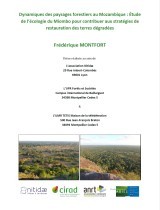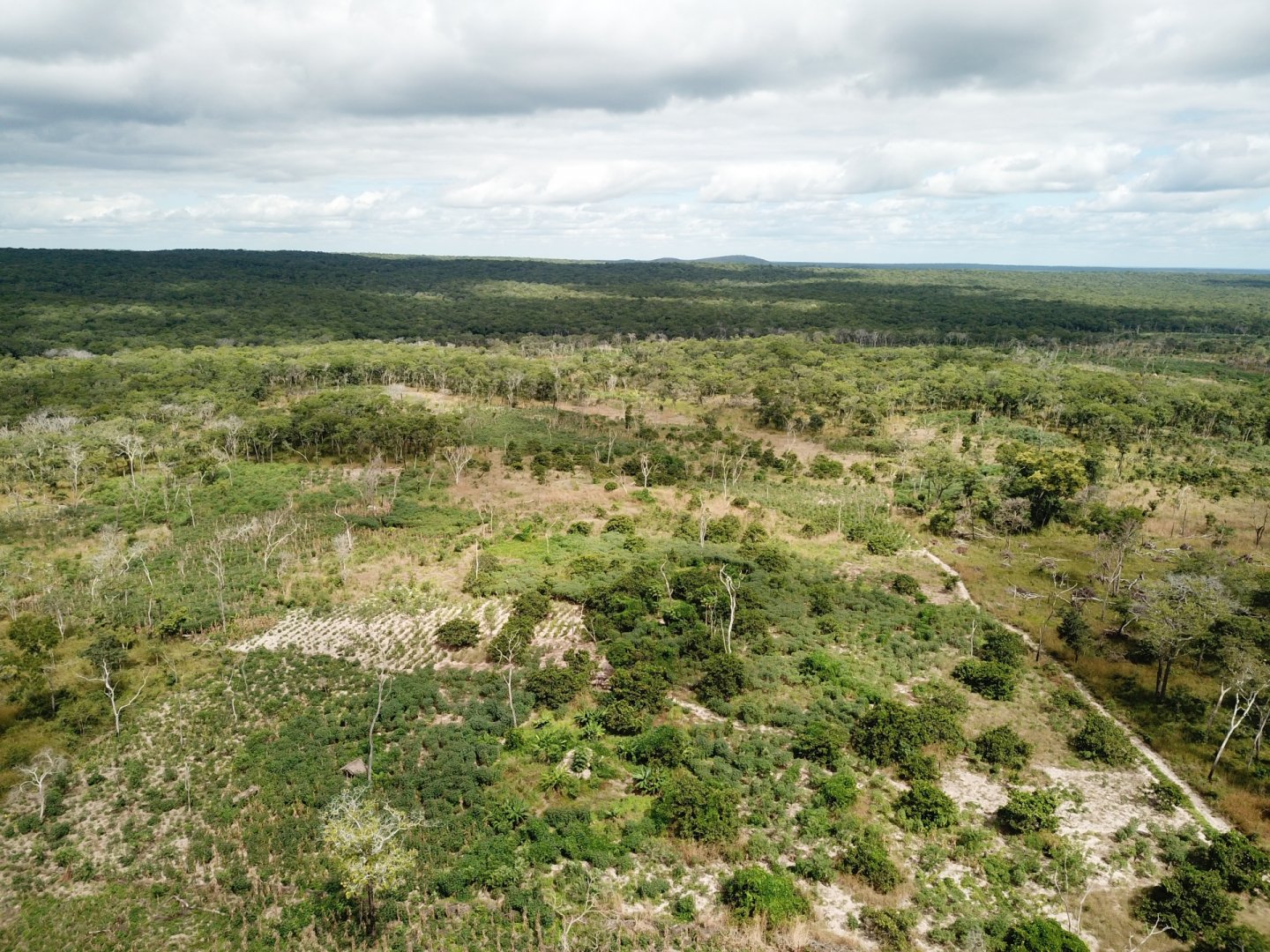

Thesis defense on land degradation dynamics and forest landscape restoration opportunities in Mozambique
The presentation and the research work of Frédérique were widely and unanimously recognized by all the members of the jury for their clarity, their quality, great importance in the fight against land degradation in Mozambique. Frédérique's research focuses on "Forest landscape dynamics in Mozambique: Study of the Miombo ecology to contribute degraded-lands restoration strategies". The knowledge acquired and the methodology developed open up new perspectives to improve planning for the restoration of forest lands in one of the major dry forest ecosystems in the world.
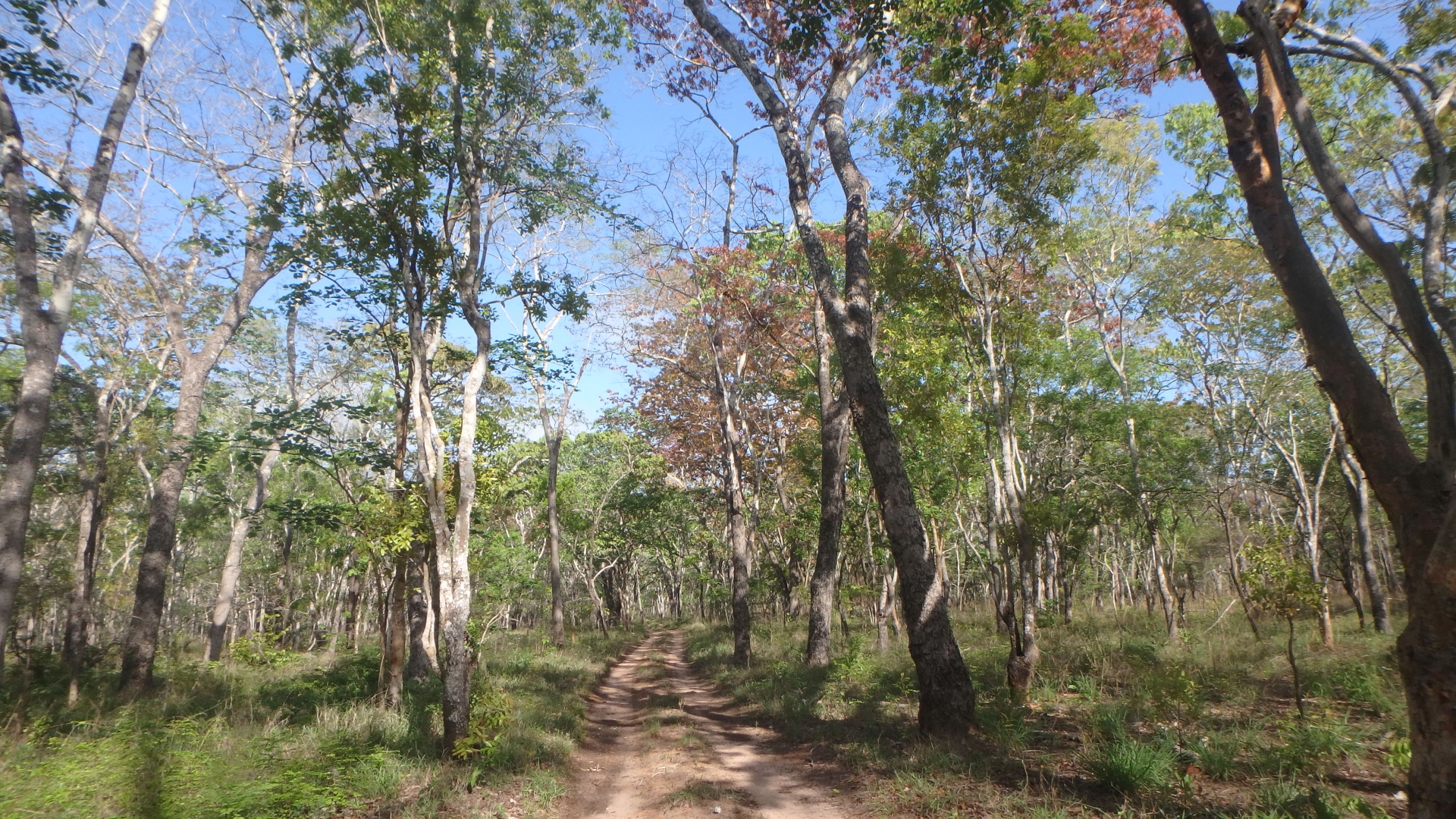
Typical forest landscape of Miombo (Gilé National Park)
Methodology and results
The objective of the thesis was to analyze the dynamics, characteristics and determinants of the evolution of forest landscapes in order to fuel strategies for the restoration of degraded lands in Mozambique. This study was particularly interested in i) understanding the drivers of land degradation at the national level, ii) assessing the resilience of the Miombo ecosystem in slash-and-burn agriculture systems in the central region of the country (Zambezia ), and iii) propose an approach to identify potential areas of forest landscape restoration based on the knowledge acquired. Analyzes of satellite time series (vegetation indices and climate variables) have made it possible to document the state of the land at the national level and to quantify the factors of land degradation and regeneration. The results show that 25% of the country has experienced a significant decline in vegetation productivity and that a large part of these changes (61%) is directly attributed to human activities such as forest degradation and deforestation, mainly linked to slash-and-burn agriculture.
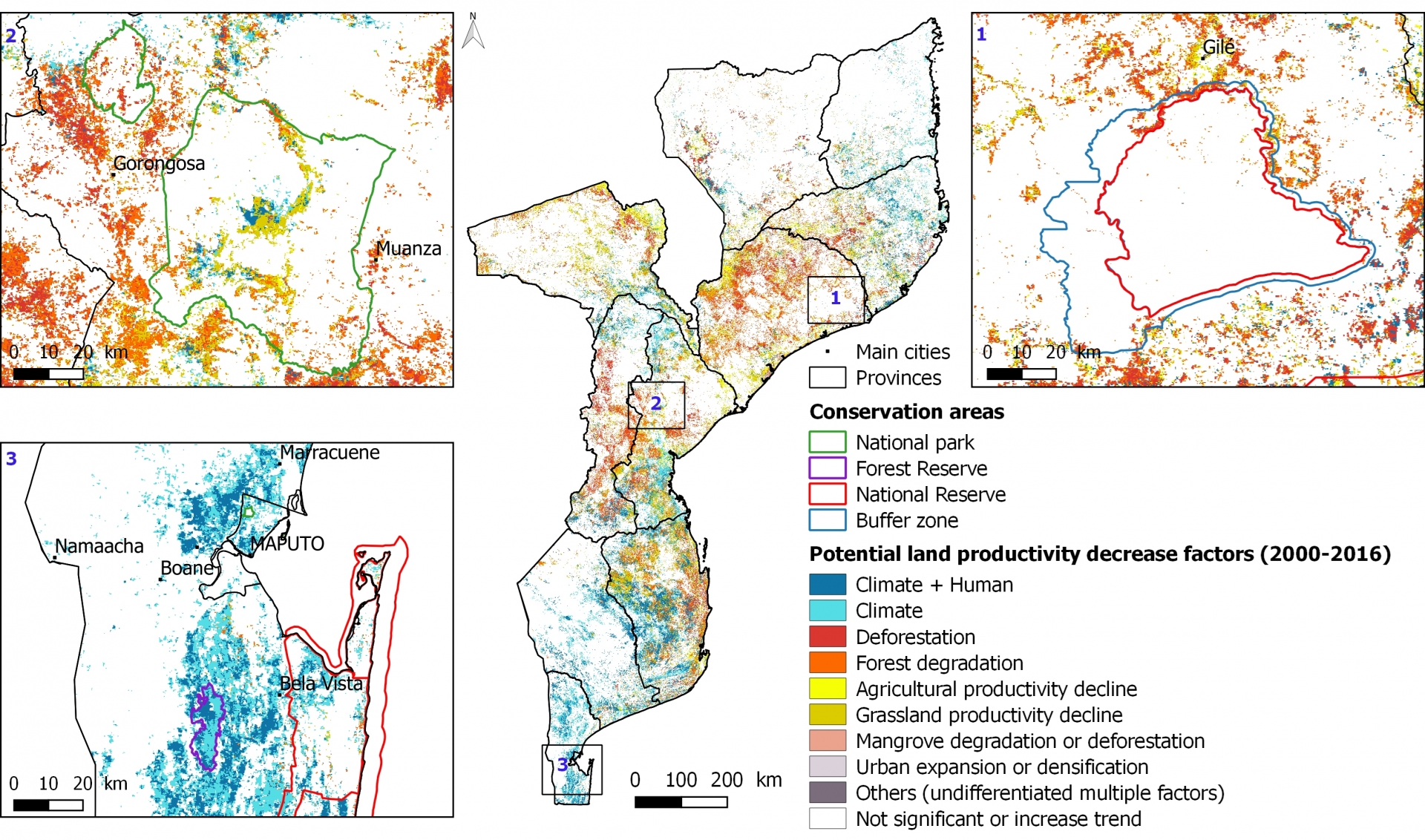
Spatial distribution of the main factors reducing vegetation productivity in Mozambique
Floristic and pedological inventories and field surveys were carried out on the outskirts of Gilé National Park in order to analyze the dynamics of forest regeneration after slash-and-burn and the impact of repeated crop-fallow cycles. The results show that Miombo has a high capacity for regeneration in terms of diversity of woody species and soil properties after low intensity and short duration disturbance. The specific richness, diversity and properties of the soil are restored after 20-25 years of neglect. However, these disturbances have a long-term effect on species composition and stand structure. It is also observed an effect of the intensification of slash-and-burn agriculture which modifies the specific composition, reduces the woody diversity and the organic carbon stocks of the soil.
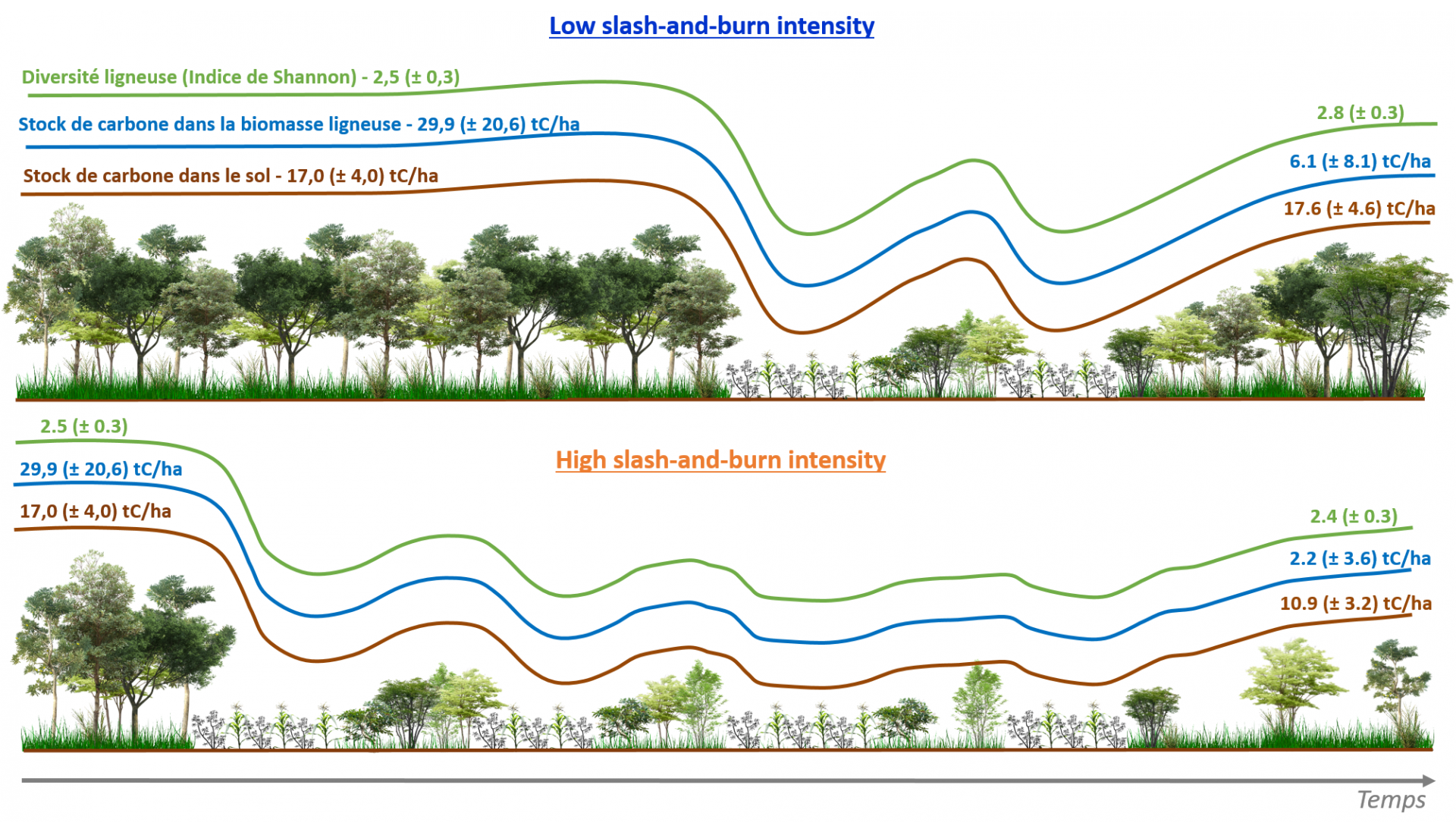
Impact of the intensity of slash-and-burn agriculture on woody biodiversity and carbon stocks in woody biomass and soil
This knowledge from remote sensing studies and field inventories has been combined in an innovative approach to identify priority restoration areas and management options (passive or active restoration), in order to improve landscape functions ( carbon accumulation, habitat connectivity) and enhance biodiversity. This approach is based on a multicriteria analysis, the development of spatialized environmental indicators and the analysis of the trajectories of agrosystems at the regional level.
>>> For more information, the defense presentation and the thesis manuscript are available for download below:
Related documents
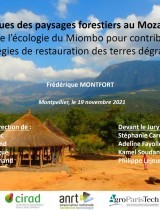
Thesis defense - Forest landscape dynamics in Mozambique - a study of the Miombo ecology to contribute to degraded-lands restoration strate…
